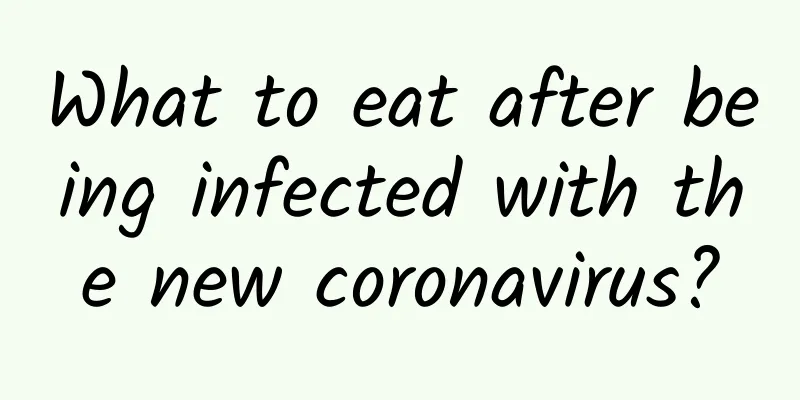Can you learn without a brain? The debate over the boundaries of single-cell learning

|
Learning, as a psychological and cognitive concept, refers to the process of acquiring new understanding, knowledge, behavior, skills, values, attitudes and preferences. Traditionally, we believe that learning is an ability that only organisms with advanced cognitive functions have. However, where are the boundaries of learning? How does it happen? Some researchers believe that we can learn because every single cell can "learn". By Catherine Offord Compiled by Wang Chao The concept of "single-cell learning" first emerged in the mid-20th century and was controversial as soon as it came out. After decades of silence, this issue has recently regained the attention of researchers. Researchers hope to figure out how cognition is formed in the presence or absence of a brain. 01 Controversial early research In 1960, Beatrice Gelber opened an institute in Tucson, Arizona, called the Basic Health Research Institute. Local newspapers interviewed Gelber, describing her as a “passionate psychologist” and reporting on her research—research that even she considered unorthodox. Gelber mentioned an unexpected behavior she had discovered a few years earlier in a protozoan called Paramecium aurelia. She believed that this single-celled organism had the ability to learn, and that learning was not limited to higher species like mammals or birds. Scientists, she told reporters, “thought I was crazy at first, but now they think it’s interesting.” Gelber's academic career did not begin early. She did not really start scientific research until her three children grew up. While studying for a doctorate at Indiana University, she became interested in the apparently complex behavior of Paramecium and began to try to train these single-celled organisms with cilia to associate stimuli with rewards, just as Pavlov trained dogs to associate bells with food. She placed a culture of Paramecium on a pool of liquid on a microscope slide and inserted a wire coated with bacteria (bacteria are delicious food for Paramecium). Although these Paramecium were a little restrained at first, they soon swam towards the wire. After several experiments, Gelber found that placing a wire without any bacteria in the liquid would also trigger the same foraging behavior. Psychologist Beatrice Gelber conducted a series of experiments in the 1950s and 1960s to test associative learning in paramecium. In her main experiment (top row), she found that paramecium (green) initially ignored a metal wire dipped into a microscope slide, but when she coated the wire with bacteria (red) that paramecium likes to eat, they swam over. After several such training sessions, she returned the wire to the liquid and found that the protozoa still swam over, indicating that they had learned to associate the wire with food. To rule out other explanations, Gelber did some control experiments: in one control group, she did not provide the wire or any food during training (bottom row); in another control group, she put in bare wire instead of bacteria-covered wire during training (middle row). She concluded that no learning occurred in either control group. Some of Gelber's critics argue that Gerlber's experiments failed to effectively rule out other factors, such as changes in the liquid caused by bacteria. Other researchers believe that Gerlber's experiments are physiologically implausible. In the view of these researchers, it is simply impossible for such a simple organism to be capable of learning behavior. In Gelber's view, her experiments show that Paramecium can learn to associate the wire with food, which is called associative learning. This view challenges the existing cognition of many scientists, because it is generally believed that only highly evolved multicellular animals with central nervous systems can "learn". However, Gelber's research results mean that the biological mechanisms required for learning and other cognitive processes may exist not only in the connections between neurons in the animal brain, but also in individual cells themselves. In a 1962 paper, Gelber speculated: "Perhaps the biochemical and cellular physiological processes encoding new reactions are continuous in these phyla, which is why protozoa and mammals are so similar." (Note: Paramecium and mammals belong to the phylum Protozoa and Chordata under the class Animalia, respectively.) Her conclusions sparked debate in the scientific community. Some researchers found the idea interesting, but many critics thought her experiments were flawed in their control of variables: She did not rule out simpler reasons, such as tropism, a basic, spontaneous response of organisms to stimuli like wire or food. Critics also thought she blurred the original boundary between us and protozoa. Paramecium researcher Donal Jensen wrote in Science in 1957: "Gelber's arbitrary application of concepts (reinforcement and approach reactions) and situations (food presentation) that only exist in higher organisms to protozoa seems to me to overestimate the sensory and motor abilities of this organism." By the time Gelber died in 1991, her work had all but faded from view; a search for her name in academic papers between 1980 and 2020 yielded almost zero results—no articles she co-wrote, and no one cited her papers. But now, 70 years after she began her experiments, a team of researchers at Harvard University believes her ideas deserve a “revival.” Harvard cognitive neuroscientist Sam Gershman recently collaborated with colleagues to publish a review in eLife that reviewed Gelber’s work. In Gershman’s view, Gelber’s work did touch on some points—her ideas have some similarities with contemporary researchers’ views on “information storage in single neurons.” Gershman said that in addition to experiments studying the learning ability of single-celled organisms, experiments studying multicellular organisms have also obtained some evidence, which together indicate that at least some types of memory can be encoded and stored in changes inside cells. For example, some memories can affect epigenetic DNA modifications or change gene regulatory networks to some extent. Although some Paramecium biologists still don't believe that single-celled organisms can learn, Gershman hopes that researchers can open up their minds and find some general rules that can explain how complex behaviors in the animal kingdom are generated, ultimately helping us better understand "learning" and "memory." 02 Evidence for single-cell learning People are full of doubts about single-cell learning because experimental verification is not simple. How to design a reasonable experiment to distinguish the influence of different causes on the results is a long-standing problem. For Gelber's experiment, the key is how to prove that the behavior of Paramecium changes (swimming towards the wire) because they associate the stimulus with the reward, rather than because they instinctively respond to chemical signals or other signals released by bacteria and wires. According to Gershman, Gelber's opponents have also conducted some experiments to prove that Gelber's experiments are not repeatable, but these opposing experiments themselves have some problems. Although Gelber has carefully conducted some control experiments to strengthen her experimental conclusions, critics remain unmoved because "single-celled organisms do not have the ability to learn" is already a deeply rooted concept. 2.1 Progressive behavioral adaptation of the trumpet filament In fact, decades before Gelber began studying Paramecium, someone had discovered that protozoa could “learn.” American zoologist Herbert Spencer Jennings (1868-1947) had studied another protozoan, Stentor roeseli, a single-celled trumpet-shaped ciliate. Using carmine dye as a stimulus, Jennings found that Stentor roeseli responded differently to repeated exposures, suggesting that they were learning from past experience to some extent. Like Gelber, his findings were criticized in the mid-20th century and considered unrepeatable. Jeremy Gunawardena, a systems biologist at Harvard Medical School, was speechless because Jennings’s critics didn’t even use the same ciliate when repeating his work. Gunawardena is a co-author of Gershman's review. Like Gershman, he is interested in single-cell learning because it overturns scientists' existing understanding of complex behaviors such as learning. To explore these ideas, his team set out to replicate Jennings' experiment. Gunawardena's group chose to use polystyrene, which stimulates the cells better than carmine dye. They used a needle to deliver polystyrene particles to a glass slide, after which the hornworms deposited on the slide showed various avoidance behaviors, such as bending to avoid, curling up, or swimming away completely. The researchers found that, as Jennings described, these cells seemed to show a behavioral progression-the initial response was not so violent, perhaps just bending slightly, but when the stimulus came again, they would swim away or shrink directly. Although this avoidance behavior is not as complex as the associative learning observed by Pavlov in dogs, the results do show that hornworms can adjust their responses based on past experience. In 2019, Gunawardena published these conclusions in the journal Current Biology. Looking back now, Jennings' conclusions at the time may not be wrong. Following experiments conducted by Herbert Spencer Jennings in the early 20th century, researchers at Harvard Medical School recently observed an adaptation pattern in the protozoan trumpet worm that can be called "behavioral hierarchy." Every few minutes, they fired beams of polystyrene particles at the trumpet worms deposited on the slide to stimulate the cells on the slide (see ①). As Jennings recorded, they found that the behavior of the trumpet worms changed depending on what happened before. At first, its response was to bend away from the polystyrene particles (see ②) or wave its cilia (see ③). But after a while, they took a more exaggerated approach-contracting (see ④), or simply swimming away (see ⑤). The researchers said in their paper that although this series of behaviors is not a complex form of learning, it can show that the trumpet worms do refer to previous experience when making decisions. 2.2 Habitual learning of Physarum polycephalum Another single-celled slime mold, Physarum polycephalum, also appears to be capable of simple learning. It is a special type of single-celled organism that can contain multiple nuclei. In her 2017 book Le Blob (The Blob), French biologist Audrey Dussutour used Physarum polycephalum as a model for understanding the complex behaviors of "non-neural organisms." A few years ago, her team discovered that the slime mold exhibits a non-associative learning ability called "habituation," in which an organism becomes accustomed to a stimulus and no longer responds to it. To use the example of a multicellular organism, it's like a mouse that is startled by a sudden loud noise at first, but becomes less and less reactive to the same sound the more it hears it. Dussutour's team found that if quinine and caffeine are placed on the bridge between Physarum polycephalum and food, the fungus will gradually get used to these two compounds - compounds that it usually avoids. Dussutour said that the slime mold will explore the bridge coated with stimuli for a long time at first, but once they begin to adapt, they don't seem to mind the stimuli that they have been trying to avoid before. Similar to habitual learning behavior in multicellular animals, if these slime molds do not encounter these compounds for several days in a row, they will "recover" from their aversion to these compounds. In this regard, the team also conducted detailed control experiments to prove that this habit is only generated for these compounds, rather than because the slime mold's sensory system is overloaded, causing a fatigue reaction. Experiments conducted by researchers at the French National Center for Scientific Research show that Physarum polycephalum (a single-celled slime mold that can move by protruding the edge of its body) exhibits a learning mode called "habituation learning". This is a basic non-associative learning. Slime mold (yellow) and food (white) are placed on two plates and then connected with a bridge in the middle. The slime mold usually grows on the bridge (see ①). If the bridge is covered with substances that the slime mold does not like, such as quinine (purple), the movement of the slime mold on the bridge can be greatly reduced (see ②). However, after several consecutive days of contact with the bridge coated with quinine, the slime mold gets used to it and then grows as usual, almost unaffected (see ③). This change in behavior is not permanent-if the slime mold encounters a normal bridge again (see ④), it will forget the habit it formed before, and then re-exhibit disgust behavior when it encounters another quinine-covered bridge (see ⑤). 2.3 Remaining Controversies Studies like these two suggest that the way people think about non-neural cognitive activities is changing. “Ten years ago, you wouldn’t see papers in eLife and Current Biology about learning in single-celled organisms,” Dussutour says. “Now, people are starting to get interested.” Gershman hopes to see more research in this area, and his own lab is already planning experiments with paramecium. However, not everyone thinks the topic is worth studying. Some biologists still view protozoa as stimulus-response devices - "which may appear to be capable of complex behaviors, but are actually based on simple mechanical logic, which has been studied for more than a century." There are more objections. Judith Van Houten, a biologist and Paramecium expert at the University of Vermont, recently wrote to Gershman and his colleagues saying that she found Gelber's experiments flawed and that the conclusions about associative learning were inconsistent with current scientific understanding of the protozoan. "All behavioral studies of Paramecium must be based on an established understanding of its physiology, which was not developed overnight but is based on long-term, meticulous research from around the world." 03 Searching for memory mechanisms within cells Learning often requires some form of storage of information about the environment, so one direction researchers like Gershman hope to pursue is to look for mechanisms by which memories might form in individual cells—in single-celled organisms swimming in fluids, as well as in individual cells in multicellular animals. It’s not a stretch to think of the two as being in the same category, Gunawardena says. “A lot of the mechanisms are universal.” Take Paramecium, for example. When stimulated by certain stimuli, they generate calcium-based action potentials, and they also have GABA receptors. GABA is a well-studied neurotransmitter in multicellular animals, so Paramecium is often called "swimming neurons" in the scientific community. Gunawardena believes that "if we are lucky enough to find the mechanism in unicellular organisms, the same mechanism may exist in multicellular organisms." Gunawardena added that his laboratory also plans to conduct experiments on behavioral adaptation and habit learning in isolated mammalian cells. 3.1 Hardware Explanation The first candidate for the universal intracellular information storage mechanism mentioned above is RNA. RNA is involved in the entire life cycle of the organism, is continuously produced, and is subject to various modifications. The idea originated in the 1960s, when a biologist James McConnell (1925-1990) claimed that he could extract RNA molecules from one flatworm and inject them into another flatworm, thereby transferring memories between flatworms. However, like the several studies mentioned above, most people in the scientific community believed that this study was not repeatable, so it quickly disappeared from the mainstream view. So far, the exploration of this idea has mainly focused on simple multicellular organisms. Coleen Murphy's team from Princeton University also explored RNA in this direction. They chose Caenorhabditis elegans as the research object. This nematode can learn to avoid the same bacteria in the environment after being exposed to dangerous bacteria. Murphy's team published their preprint study on bioRxiv at the end of 2020: After the nematodes that had been exposed to specific bacteria were mashed up, they were placed together with nematodes that had not encountered these bacteria, and the latter could learn to avoid these specific bacteria. The researchers found tiny particles that are crucial for information transfer, which seem to contain RNA, but the amount is too small to be sequenced. C. elegans The results of a 2018 study by David Glanzman's team at the University of California, Los Angeles, showed that RNA carries at least some form of memory in the California sea snail (Aplysia californica). They extracted RNA from the nerve cells of two groups of sea snails, one group that had been shocked (experimental group) and one group that had not been shocked (control group), and then injected them into the bodies of the sea snails that had not been shocked; the sea snails that received the RNA injection from the experimental group behaved more cautiously, just like they had been shocked, and showed longer withdrawal behavior after being tapped. Glanzman speculates that the extracted RNA may have induced epigenetic changes in the recipient sea snail's DNA, thereby changing the animal's behavior and achieving memory transfer. He admits that most of his colleagues would have thought this was "extremely unlikely." However, a small number of studies have now found that patterns of DNA methylation or histone modification in vertebrates change during various learning processes. However, neuroscientists generally believe that these epigenetic changes are intended to assist in the formation of memories rather than store the memories themselves. Dussutour, the researcher of Physarum polycephalum, hopes to apply these ideas to the study of single-cell organisms. They are currently working with molecular biologists to see if the term "RNA mechanism" can explain the principle of habituation learning in Physarum polycephalum. Other researchers are also exploring other hypotheses to see whether changing the cell structure from a physical level will promote the formation of single-cell memory. For example, changing the cytoskeleton and changing the enzymatic phosphorylation and dephosphorylation cycle of intracellular proteins. In 2021, German researchers reported that Physarum polycephalum may use its own cell morphology to store information about the location of previous food. 3.2 Software Explanation In addition to using "hardware changes" to explain the learning mechanism of single cells, some people in the academic community are also studying "software changes." Michael Levin, a regeneration and developmental biologist at Tufts University, has been studying gene regulatory networks that control gene expression in individual cells. He and his colleagues explored how these regulatory networks can change their responses to certain stimuli without relying on physical changes - just like a computer, when recording a piece of text information input, there is no need to change the hardware at the physical level. For example, in the simplest network, assuming that the activation/inactivation of genes is caused by interactions with other genes or by external environmental stimuli, then the current state of the genes in the network depends on all the interactions and external stimulus inputs that have occurred so far, thus generating memory. This means that such networks can learn "what is associated with what" through training and change future behavior. "It's not because we changed the connection between gene A and gene B," but because everything the cell experiences changes the stable state of the entire system and changes how it responds to these stimuli in the future. "Levin said. "This is somewhat different from people's inherent cognition." 3.3 Why study single-cell learning? The significance of studying the information storage mechanism in single cells is not only in itself. Some neuroscientists even believe that this mechanism can even complement the more traditional multi-cellular theory of human memory and learning. Gershman said, "For many years, people have been complaining that our current understanding of brain memory is far from enough." The most mainstream theory now is the synaptic plasticity theory, which holds that memories are stored in the connections between neurons, and learning comes from changes in the relative strength of these connections. But many scholars believe that the theory of synaptic plasticity cannot fully explain real-world data. It is not clear whether the newly proposed intracellular information storage mechanism can make up for this shortcoming. But they are prompting researchers to rethink traditional cognitive theories. 04 The battle over the boundaries of definition Although scientists see value in the overlap between the study of single-celled organisms and multicellular organisms, they acknowledge that there is no definitive answer to where the boundary between learning, as a cognitive process, and other cognitive processes lies. Dussutour believes that if we do not borrow the terms used in traditional behavioral research when describing the complex behavior of single cells, there may be less controversy. After all, whether the learning behavior of animals is equivalent to the "learning" of single cells remains to be verified. "When we use the word 'learning' on single-cell organisms, some people feel uncomfortable." Dussutour also mentioned another similar case: discussing neuroscience within the scope of plants-whether plants can exhibit animal-like cognition, people have been arguing (for example, Fanpu once published an article discussing "Do plants also have vision"). She herself is happy to call the phenomenon she observed in Physarum polycephalum "adaptation" rather than "learning", because in her opinion, the point is not how to classify these behaviors, but to figure out the mechanism behind them. Levin and Dussutour have the exact opposite view. He believes that using common conceptual names will allow people to better recognize and compare similarities between different organisms. If we must satisfy researchers who insist on traditional cognitive boundaries, we can invent another word besides "learning", but doing so "misses the opportunity to use the most powerful tool in science - that is unification." As artificial intelligence systems become popular in living and non-living media, single-cell learning is not a shocking concept. Levin said, "We have insight into the same basic ability that exists in all kinds of systems: the ability to change future behavior based on past experience." If Gelber, the pioneer in the study of paramecium learning, were still alive, she would probably agree with Levin's holistic view. Because she has mentioned in several articles that the study of paramecium's learning ability can provide some universal insights into the information storage and behavior of all organisms. Gershman mentioned that there was no Wikipedia entry about Gelber until he and his colleagues began to ask and collect information about Gelber on Twitter. He believes that although Gelber's research makes people feel uneasy, it is indeed a pity that the pearl is covered in dust. Re-examining Gelber's forgotten research "made me strongly aware of the social attributes of scientific research and how some results were hastily rejected," Gershman said. "Research paradigms limit our vision. When thinking about a phenomenon, we sometimes go further and further along a narrow path and eventually ignore the possibility of other paths." This article is authorized to be translated from The Scientist magazine, and the title is proposed by the editor. This article is supported by the Science Popularization China Starry Sky Project Produced by: China Association for Science and Technology Department of Science Popularization Producer: China Science and Technology Press Co., Ltd., Beijing Zhongke Xinghe Culture Media Co., Ltd. Special Tips 1. Go to the "Featured Column" at the bottom of the menu of the "Fanpu" WeChat public account to read a series of popular science articles on different topics. 2. Fanpu provides a function to search articles by month. Follow the official account and reply with the four-digit year + month, such as "1903", to get the article index for March 2019, and so on. Copyright statement: Personal forwarding is welcome. Any form of media or organization is not allowed to reprint or excerpt without authorization. For reprint authorization, please contact the backstage of the "Fanpu" WeChat public account. |
<<: Breaking news! The Wenchuan mudslide has caused 4 deaths. How to deal with the mudslide?
Recommend
Rare! Bathing can cause illness. What is "bird" disease?
Recently, Ms. Wang from Liuyang, Changsha, Hunan,...
Today is the beginning of summer丨The hot clouds are dispersing, and the cool breeze is rising
"The harvest season brings the harvest of wh...
How to use the video account? Popular tips on the video account
If we talk about the short video platform that wa...
Can air fryers cause cancer? Do these 4 things to eat healthily and use them with confidence!
French fries, fried chicken wings, potatoes... Ar...
HTC is laying off employees crazily around the world: will exit the smartphone industry!
[[220402]] It's really sad that the former ki...
Six JavaScript frameworks that developers should know
With the rapid development of the Internet, mobil...
Daily Market Review Brother Saturday Column Understanding Leading Stocks 2020-2021 Practical Tutorial Updates
Daily Market Review Brother Saturday Column Under...
Microsoft exec says Xbox One was made for shooters
Although Wii U, PlayStation 4 and Xbox One are of...
App operation: How to formulate a message push strategy?
Whether it’s transactional or interactive messagi...
Is Skoda considering withdrawing from China? Why do we, who “understand Volkswagen”, no longer buy Skoda?
Skoda Auto, a Czech brand that once dominated the...
Counterpoint: Global semiconductor revenue to grow 19% in 2024
Revenues in the global semiconductor market, incl...
The "New National Standard" is officially implemented! Why do bakeries no longer use this additive?
Xinhua News Agency, Beijing, February 8th , Title...
Summary of the latest information flow advertising platforms in 2017
Feed ads are a form of advertising that is inters...
Why are wetlands called the “Kidneys of the Earth”?
Did you know that wetlands only cover 6% of the E...









